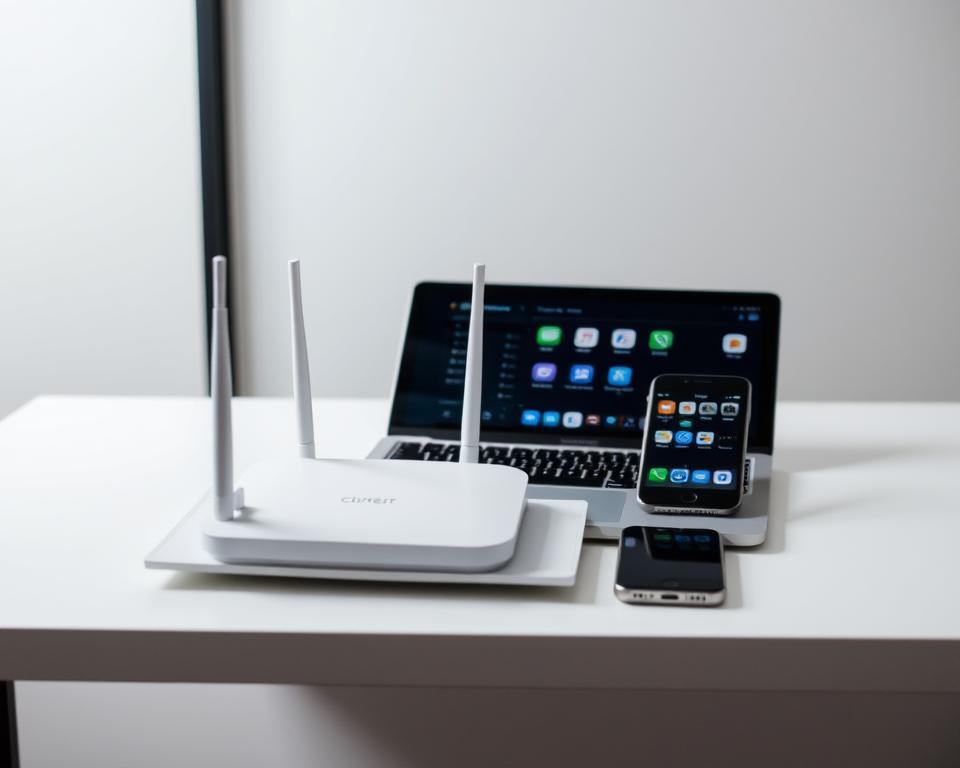Anúncios
Technology checklist can help you move with confidence as you start in 2025.
How ready are your devices, accounts, and networks for the real work ahead? In today’s landscape, organizations use structured due diligence to align tools with goals, reduce risk, and plan integrations. Schools and small businesses alike verify device readiness, sign‑ins, and guest Wi‑Fi before major events or exams.
You’ll find a friendly, practical path here that covers core skills like file management and email, plus checks for privacy, security, and deployment planning. We draw on real examples from education and business operations to show steps you can test and iterate.
Expect clear guidance, not blanket promises. Use these suggestions to measure performance, document what works, and refine decisions with reliable information. If a task grows beyond your comfort, this section shows where to ask for help and when to escalate.
Start here: why your Technology checklist matters in 2025
Begin with a simple sequence that highlights risk, value, and integration needs so you can act with confidence. A lightweight plan reduces surprises when you review vendors, evaluate an investment, or prepare a deal.
Anúncios
Use a short, repeatable process to turn complex areas into clear steps. Focus on strategy, organization, software choices, infrastructure, product quality, security, and customer care. That scope helps you map gaps without doing unnecessary work.
Borrow due diligence best practices to speed alignment with business goals. Small review cycles save time and let you adjust based on a fresh report or pilot. Document assumptions so you can test them before committing budget or access.
- Prioritize a few high-impact checks first.
- Use current reports and quick proofs of concept.
- Keep stakeholders informed with concise updates.
Treat this as evolving guidance: adopt consistent practices, then refine them as your team, products, and compliance needs change.
Anúncios
Build your core skills first
Start by mastering a few everyday computer tasks so you can work without interruption. Small habits prevent bigger problems and save time when deadlines arrive.
Windows and macOS basics: files, folders, and settings
Learn to turn devices on and off. Practice using the mouse and keyboard to move, resize, and close windows.
Open system settings to check time, updates, and sound. Know how to empty and restore the recycle bin safely.
Essential file management
Save with clear names and create folders for projects. Back up important files to an approved external drive or cloud account.
If a file goes missing, stop and ask for help before deleting other items.
Web browsers and email basics
Type a URL in the address bar, use tabs, and clear history or cache to fix loading issues. Manage downloads carefully to avoid risky files.
For email, verify recipients, use clear subjects, and handle attachments with caution. If unsure, request support.
Troubleshooting and peripherals
Reboot first for many common issues. Use Task Manager or Force Quit to end frozen apps. Check Wi‑Fi, cables, and printer drivers before a big print job.
- Run a test page after loading paper.
- Follow approved steps to install an app or software.
- Confirm account access and permissions ahead of shared sessions.
Keep a short note of steps that worked for you. When in doubt, pause and ask for support rather than guessing.
Devices, accounts, and network readiness
Before any big session, confirm that devices, accounts, and networks are ready to avoid last‑minute delays. A short run‑through the week before lets you fix issues with minimal disruption.

Check device requirements and updates before important tasks
Verify device specs and run OS and app updates early. This avoids long update cycles at start time and keeps systems stable.
Prepare networks: connectivity tests in the actual room you’ll use
Test the exact place you will use. Run a speed check and confirm guest Wi‑Fi or captive portal steps so everyone can gain access smoothly.
Create roles for smooth sessions: a simple “technology monitor”
Assign one person as a tech monitor to handle basic troubleshooting. That person coordinates with support personnel and escalation contacts.
Set up essential tools ahead of time and confirm sign‑ins
Pre‑install required apps, add all staff to the Test Day Toolkit, and confirm account sign‑ins. Ask students to open apps like Bluebook before the day so updates auto‑install.
Personal versus managed devices: guest Wi‑Fi, permissions, and policies
If personal devices are allowed, confirm they meet requirements and can access guest Wi‑Fi without admin rights. For managed devices, work with your infrastructure team to push updates and check filters.
- Keep a short process list for the week before and the day‑of (charging, spare cables, fallback network).
- Document who to contact for help and share escalation paths with all facilitators.
- After the session, capture lessons and update your readiness process.
For a step‑by‑step readiness process, review the detailed guide on technical readiness.
Security, privacy, and compliance basics
Security basics give you a clear set of actions to protect accounts, devices, and data. Keep steps simple and repeatable so your team can follow them without confusion.
Identity and access
Use MFA for all critical services and apply least‑privilege access to accounts. Remove credentials immediately during offboarding to cut stale access that raises risk.
Data protection and lifecycle
Protect sensitive information with encryption at rest and in transit. Define collection, storage, use, distribution, and secure disposal with clear owners and logs.
Maintenance and network defenses
Patch on a regular cadence and prioritize fixes tied to known exploits. Know where your firewalls and intrusion prevention sit so you can request exceptions correctly.
Development and awareness
If you write scripts, validate inputs and handle errors without exposing secrets. Run brief phishing drills and repeat acceptable‑use reminders to reduce human errors.
- Keep a register of systems handling personal or regulated data and who can access them.
- Document incident reporting and isolation steps for company devices and cloud services.
- Review roles and controls quarterly and follow consistent best practices rather than promising perfect safety.
Technology checklist for setup, development, and maintenance
Start by mapping a clear roadmap that ties development work and operations to a small set of measurable goals. This gives your team a shared target and limits scope creep.
Clarify goals and roadmap
Define 2–4 outcomes that match your business needs and the skills of your employees. Make each objective measurable so you can track progress.
Exemplo: reduce mean time to restore a system by 30% in six months. Add a short delivery timeline and owners.
Software selection
Pick software that fits core requirements and integrates cleanly with your stack. Check APIs, export options, and support commitments.
Rate vendor documentation and sample code. Good docs cut onboarding time and reduce hidden effort.
Cloud and infrastructure choices
Decide on on‑prem, cloud, or hybrid based on control, cost, and scalability. Document why that model fits current and near‑term needs.
Plan resilience and backups as part of infrastructure design, not as an afterthought.
Deployment and updates
Use semantic versioning and a release cadence that matches your risk tolerance. Define a tested rollback plan and automate deploy steps where possible.
Quality practices and analytics
Keep quality visible with unit and integration tests, code reviews, and a clear bug triage process. Track KPIs like uptime, response time, and error rates.
Support operations and documentation
Set SLAs, escalation paths, and channel coverage that match your users. Treat documentation as a product: quick‑starts, runbooks, and change logs must be maintained.
- Log technical debt decisions and revisit them on a set cadence.
- Include security scans in the build process and manage secrets properly.
- Measure trends, iterate, and avoid one‑size‑fits‑all solutions.
Grow your capabilities with responsible creativity
Balance exploration and safety: run short pilots so your team can test new approaches without disrupting core work. Keep experiments time‑boxed, measurable, and easy to roll back.
Learn modern tools safely
Try AI assistants, modern code editors, and automation in small trials. Measure how these tools affect developer experience and code quality.
Keep humans accountable for final outputs and reviews.
Respect content and IP
Check licenses and attribute sources correctly. Avoid using models or materials in ways that your company policy or the law does not allow.
Portfolio thinking and reuse
Favor reusable components so product teams share patterns and cut duplicated code. Standardize a few frameworks where they help the business.
Documentation that scales
Keep quick‑starts, playbooks, and runbooks lean and searchable. Good documentation speeds onboarding and reduces maintenance time.
Team, handoffs, and readiness
Clarify roles, channels, and handoff steps so work continues when people change roles. Prepare access matrices, hosting details, and brand files for orderly transitions.
Incident readiness
Run backups and disaster recovery drills regularly. Verify restores and document recovery time objectives so you can act confidently when things break.
- Time‑box experiments and measure impact.
- Prioritize reusable patterns over one‑off solutions.
- Plan training sprints to support steady growth.
Conclusão
Make small experiments count: capture outcomes, share results, and update roles so everyone knows next steps. Treat your 2025 technology plan as a living checklist you revisit when business priorities shift.
Focus work on a few core areas: software, development flow, infrastructure, security, and support. Keep minimal process steps so your team and developers know where to place effort next.
Before any big investment or deal, run a short pilot in one place, write a brief report, and confirm assumptions with daily users. Record access, roles, and personnel contacts so handoffs inside your company stay smooth.
Balance ambition with maintenance: schedule time for fixes and upgrades, close feedback loops from support, and scale creative ideas only when the data supports them. Keep this simple and repeatable.



